Decarbonisation of transport is vital to make mobility more sustainable and enable France to achieve its climate goals. The goal is clear: becoming carbon-neutral by 2050.
EuMo Expo 2024 will be an opportunity to review energy transition issues in transport, chat with European experts, and learn about other European countries’ experiences.
During your visit, take time to wander round and discover all the practical solutions put forward by our exhibitors to make the industry low-carbon: biofuels, charging infrastructure, battery production and recycling, and more. Take a look at our article! 👇

Biofuels
The goal of France’s national low-carbon strategy (stratégie nationale bas carbone, SNBC) is to cut greenhouse gas emissions by 28% in the transport industry by 2030 (compared to 2019). Greening fuel and powertrains is seen as the main way to decarbonise heavy vehicles. Low-carbon liquid fuels (LCLFs) offer an immediate, competitive solution for diesel vehicles on the road compared to other power sources, in particular because LCLFs do not require any investment in new buses and coaches.
In 2020, the Avril group entered the B100 market with its Oleo100 brand, a biofuel made from rapeseed for diesel engines powering captive fleets. This has been a success, with the company bringing 500 tanks on stream per year in France (the equivalent of two per day) for its clients, among them Transdev, Keolis and Flixbus. At the same time, the company has been working with Iveco to have a B100 approved school bus ready by autumn 2024. B100 advantages include the fact that its price is virtually the same as that of diesel due to beneficial tax provisions. “On a life cycle analysis basis [from field to wheel], B100 makes it possible to reduce greenhouse gas emissions by up to 60% compared to conventional diesel according to the data in French research agency ADEME’s Carbon database,” according to Florian Mohand, Director for energy transition for Bolloré Energy, which manages the supply and distribution of energy products. Another asset relates to ‘B100-only’ vehicles, i.e. heavy vehicles that can use only B100 and thus benefit from better amortisation terms and the Crit’Air 1 label, allowing them to have access to LEZs. The only drawback is that France’s current national output of B100 can fuel only 60,000 or so such vehicles – 10% of the total fleet according to Claire Duhamel, CEO of Oleo100. This is because B100 production depends directly on the amount of farmland set aside for growing rapeseed; what is more, this is destined primarily for animal feed and food-grade oil.
Another up-and-coming biofuel is HVO, produced entirely from used oil. One advantage of this fuel is that it can be fully mixed with diesel, allowing transport companies to refuel wherever they are. In France, the industry is now awaiting publication of the official order allowing the sale of HVO100 at fuel stations – but the amounts currently being produced in France and indeed Europe are not yet enough to meet demand, and the process involved requires hydrotreatment that makes its cost price non-competitive: around €3 per litre, some 15 cents more than diesel when France’s TIRUERT fuel duty scheme is factored in: national requirements to include renewables derived from the EU’s RED and FQD Directives are gradually increasing, but too slowly to allow the solution to expand, according to Florian Mohand. Bolloré Energy provides HVO100 to buses in Franche-Comté; experimentation is also underway on the rail link between Besançon in France and La Chaux de Fonds in Switzerland. Providers of this fuel are calling for it to be taxed in the same way as B100 and hope that ongoing discussions with national government will enable it to become eligible for Crit’Air 1 labelling too. Advocates point out that from a life-cycle analysis (LCA) perspective, HVO100 can cut greenhouse gas emissions by up to 90% compared to diesel-powered vehicles.
EU CO2 regulations calculate emissions on a ‘tank-to-wheel’ basis, which puts biofuels at a disadvantage. Professionals are counting on the review clause scheduled for 2027 for them to be deemed ‘clean fuels’. “Shifting legislation means that we don’t have enough clarity to make longer-term investments,” says Claire Duhamel from Oleo100.
EV charging infrastructure
Electrifying fleets is a key factor in greening powertrains. 37% of new buses coming onto the road in 2022 were electric. However, Total Cost of Ownership (TCO) of electric vehicles is still much higher than for a diesel vehicle and will remain so at least until 2030 according to the roadmap for decarbonisation of heavy vehicles, which recommends direct aid rather than interest-free loans to overcome this investment barrier.
As to charging stations, in October 2023 the French government announced a further €200 million of funding via the Advenir programme to speed up deployment; it is also set to announce a national master plan for high-power connection of charging stations, including at rest areas on major routes to facilitate long-distance mobility. At present, heavy vehicle recharging mostly takes place in city bus depots.
The Spanish firm Jema Energy (part of the Irizar group) has already installed 10,000 charging stations in depots across Europe for several brands of bus, including in Paris for buses operated by RATP. With Gamma, its new automatic charging system, no manpower is tied up in handling cables; buses can be charged simply by parking parallel or at right angles to a pantograph. Jema Energy provides both turnkey and bespoke solutions to meet the requirements of each depot, including project management to facilitate installation and subcontracting for civil engineering and electrical installation works, as well as after-sales service and maintenance. “The main concern of our clients is whether we can adapt to their operating procedures and the physical limitations of their garage; they also seek reassurance about service over the long term and our ability to keep up with changing standards over time,” explains Jema Energy’s Sales and Marketing Director Estibalitz Aramburu. That’s why Jema Energy is a member of European consortia such as CharIN and devotes ten percent of its revenues to R&D, thus maintaining its capacity for innovation and meeting customer expectations.
Chargepoly is a charging operator for HGVs that is now entering the passenger transport segment. The company devoted three years’ worth of R&D to developing charging stations and their software for optimised fleet energy management. Diversifying in this way has involved explaining the particularity of their innovation to the new market: distributed architecture consisting of a power unit and charging satellites. These are linked together by a DC microgrid (requiring little in the way of civil engineering works) and a ‘smart’ control algorithm that allows the right amount of power to be dispatched to the right vehicle at the right time. “This shared power is more cost-effective and the layout makes the footprint of each charge point much smaller,” says Chargepoly’s deputy CEO Thomas Vanquaethem. “We explain our technology to consultants so that they can draft more technology-agnostic specifications.” Chargepoly can also provide support for the design and dimensioning of the infrastructure and propose funding solutions such as leasing or third-party investment. The start-up has broadened its offering by working with DREEV, a joint venture between EDF and Californian startup NUVVE to buy cheaper electricity and in the future, offer Vehicle-to-Grid power (V2G): “Our platform is interconnected with DREEV’s, which follows the spot market for electricity on an hour-by-hour basis, enabling our clients to save up to 40% on their energy bills,” adds Thomas Vanquaethem. Chargepoly is also looking to its majority shareholder Voltalia (which produces renewable energy in some 20 countries) for support as it works towards having charging stations supplied by solar power in the future.
Battery production and recycling
Electrification of transport is set to multiply demand for batteries by a factor of 14 by 2030. To address this demand, in 2017 France supported the European Commission’s European Battery Alliance initiative to set up a French-German battery industry that will ultimately span the entire value chain.
Webasto, a German firm that specialises in sun roofs, additional heating and AC for vehicles started making NMC (nickel-manganese-cobalt) batteries for commercial vehicles in 2019. Following on from its 35kWh model, the OEM has now released a 40kWh battery providing more energy density and thus more range for the same size and weight. “We’re developing personalised and bespoke battery solutions for private cars and commercial vehicles in line with our clients’ specifications. We also have standardised batteries such as the Pro 40 that can also be used for smaller-capacity vehicles such as the French firm Lohr’s Cristal shuttles,” says Webasto Key Account Manager Frédérique Schmidt-Baricault. “Our distinctive expertise extends to the BMS (Battery Management System), so we can optimise battery lifespans, particularly with respect to their thermal management, as we have done for the Bluebus.”
Also in this value chain is German company Schaltbau, which is making DC contactors for BMS under a new brand, Eddicy: these are used to take the battery on and offline and help ensure battery control is carried out safely. Schaltbau supplies battery manufacturers such as Forsee and manufacturers including Safra (for its hydrogen-powered buses). By 2026, the OEM is aiming to become the leader in DC contactors for mobility and energy, including for stationary electricity storage and charging stations; in France, Schaltbau is already working with DBT.
After launching its first ‘Battery Plan’ in 2018, in 2021 France introduced its National Battery Strategy to 2030 to speed up the emergence of a national battery production industry, including recycling (as required by the EU since the 2006 Battery Directive). Bib has specialised in electric vehicle fleet batteries for companies such as ALD, Arval, Agilauto and Hertz as well as carmakers. “Our solution allows the health status of an entire fleet to be analysed remotely and in real time, without human intervention,” explains Bib’s co-founder and CEO, Pierre-Amans Lapeyre. Once a battery is no longer operational, the startup offers to buy it back from the client and then identifies partners to recycle it or give it a second life on the basis of the most cost-effective and environmentally-friendly solution. Bib also takes charge of supply chain operations, delivering batteries to its partners. “Our goal is for battery recycling to be seen as a source of income rather than as a cost” concludes Pierre-Amans Lapeyre. “The task is too big for one player alone to take on: upstream, we need the engagement of fleet managers, manufacturers, and drivers; downstream, we need industrial-scale recycling and second-life projects. We really do have to think in terms of an entire value chain.”
